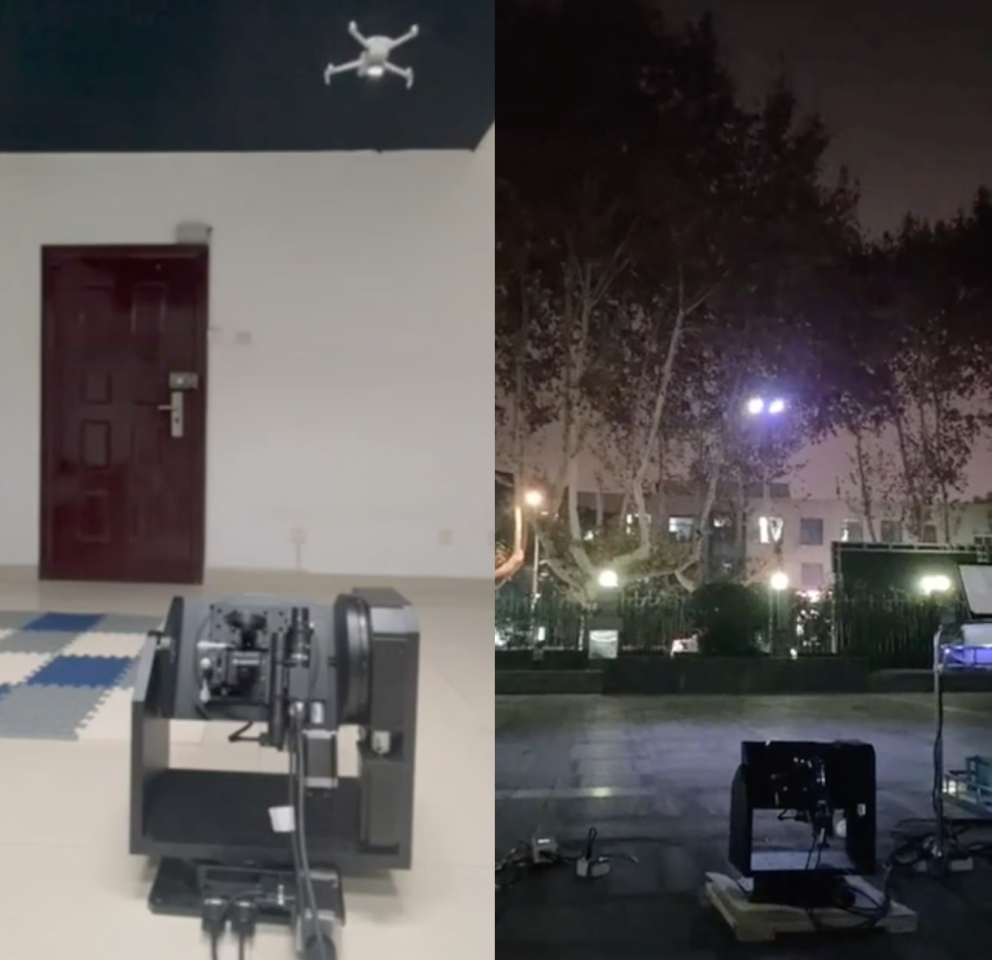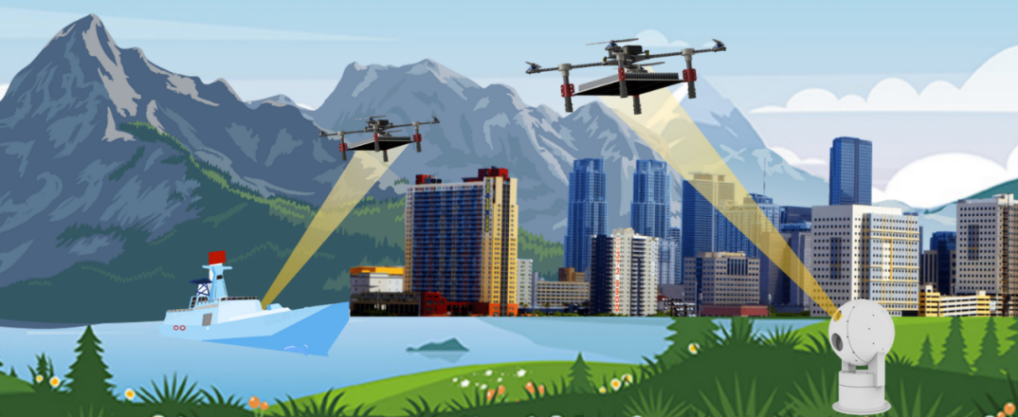Laser-charged Chinese drone can stay in the air indefinitely

But electricity is cheap, and if you’re plugged into the mains, these losses are acceptable if it means your surveillance drone never needs to come down.
Washington-based company PowerLight, formerly known as LaserMotive, demonstrated a similar wireless drone charging system back in 2012, keeping a large drone airborne for 48 hours in a wind tunnel and powering one of Lockheed Martin’s Stalker drones outdoors from ranges up to 600 m (1,970 ft).
The NPU team developed an “intelligent visual tracking algorithm” to keep its beam targeted on the drone, as well as an adaptive beam shaping system that can compensate for changes in atmospheric density. It also designed a method of identifying obstacles and rapidly adjusting the power of the beam to a safe level. They tested it with a small quadcopter, and demonstrated it working indoors with the lights on and off, and outdoors at night, with video showing the drone reaching altitudes around maybe 10 m (33 ft).

The long-range capability of laser systems suggests this kind of system could open the door to higher-altitude drone operations, which could effectively create persistent airborne platforms capable of acting a little like low-altitude satellites – although where multicopter-style platforms are concerned, their use will likely remain weather-dependent.
You’d expect there to be some regulatory pushback, as well, given that these devices will point lasers into the sky. NPU did not disclose the laser’s power output, the range of the system or its efficiency, citing the device’s military potential. But this is clearly an early-stage lab prototype.
PowerLight, on the other hand, seems much closer to commercialization, and the company says it’s working on long-range, lightweight and compact wireless laser power transmission with functional safety shutdown systems and the capability to work regardless of weather conditions.

Military applications aside, it’s interesting to consider how wireless power might affect other electric aircraft – particularly power-hungry eVTOL air taxis, for which battery density and range are among the chief bugbears. A citywide grid of laser chargers supplying energy as these things fly overhead could help these things make more commercial sense – but there’s a long way to go before this kind of thing’s legally approved and ready for urban use.
Sources: China Daily, South China Morning Post